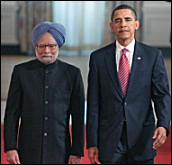 As noted in yesterday’s post dealing with the proposed rule by the Bureau and Industry and Security (“BIS”) on the transfer of United States Munitions List (“USML”) items to the Commerce Control List (“CCL”), parts and components of USML items may be transferred to the CCL while the item itself remains on the USML. In those cases, the parts, which will be covered under the new series 600 ECCNs, can be exported under BIS’s license exception RPL. However, that license exception requires that the exported spare parts be one-for-one replacements for parts of an item that had been previously exported pursuant to a license issued by the Directorate of Defense Trade Controls.
As noted in yesterday’s post dealing with the proposed rule by the Bureau and Industry and Security (“BIS”) on the transfer of United States Munitions List (“USML”) items to the Commerce Control List (“CCL”), parts and components of USML items may be transferred to the CCL while the item itself remains on the USML. In those cases, the parts, which will be covered under the new series 600 ECCNs, can be exported under BIS’s license exception RPL. However, that license exception requires that the exported spare parts be one-for-one replacements for parts of an item that had been previously exported pursuant to a license issued by the Directorate of Defense Trade Controls.
The problem here is that those parts now may only be exported without license using the overly restrictive conditions of RPL which require that the parts be a one-to-one replacement and cannot be shipped to be held in inventory for future repairs. This has been a much criticized aspect of BIS regulations which makes American goods less competitive by holding repairs hostage to the shipping delays that the one-to-one replacement rule inherently causes.
If the parts remained on the USML, they would be entitled to the license exemption in ITAR section 123.16(b)(2), which does not contain the burdensome one-to-one replacement requirement. That exemption permits the unlicensed export of repair parts if they are valued at less than $500, provided there are no more than 24 shipments per year to each approved end user. In those many instances where spare parts needed for repairs are relatively inexpensive, this rule provides much more flexibility to exporters; but it will now be lost for those parts that are transferred to the CCL.
Perhaps, the new license exception STA will be used to ameliorate this hardship somewhat. However, for each of the transferred USML parts, STA eligibility will depend on a one-time eligibility determination that may not have been made yet for the particular part at issue. And it won’t apply to exports of parts to countries not eligible for license exception STA. Those wishing to comment on the proposed rule might consider requesting that the provisions of 123.16(b)(2) be written into the revised RPL for the new series 600 ECCNs.

 Posted by
Posted by  Category:
Category: 

 Let’s say that you were an agency like the Bureau of Industry and Security (“BIS”) and you had a huge and complex list of sensitive items that needed a license for export. Now, unless your administrative goal was to collect a bunch of fines for illegal exports, you would make that list easily and readily available, wouldn’t you? You would think.
Let’s say that you were an agency like the Bureau of Industry and Security (“BIS”) and you had a huge and complex list of sensitive items that needed a license for export. Now, unless your administrative goal was to collect a bunch of fines for illegal exports, you would make that list easily and readily available, wouldn’t you? You would think. In tomorrow’s Federal Register, the Department of Commerce’s Bureau of Industry and Security
In tomorrow’s Federal Register, the Department of Commerce’s Bureau of Industry and Security  A
A  As the troubled Washington Times enters into what may be its
As the troubled Washington Times enters into what may be its 

